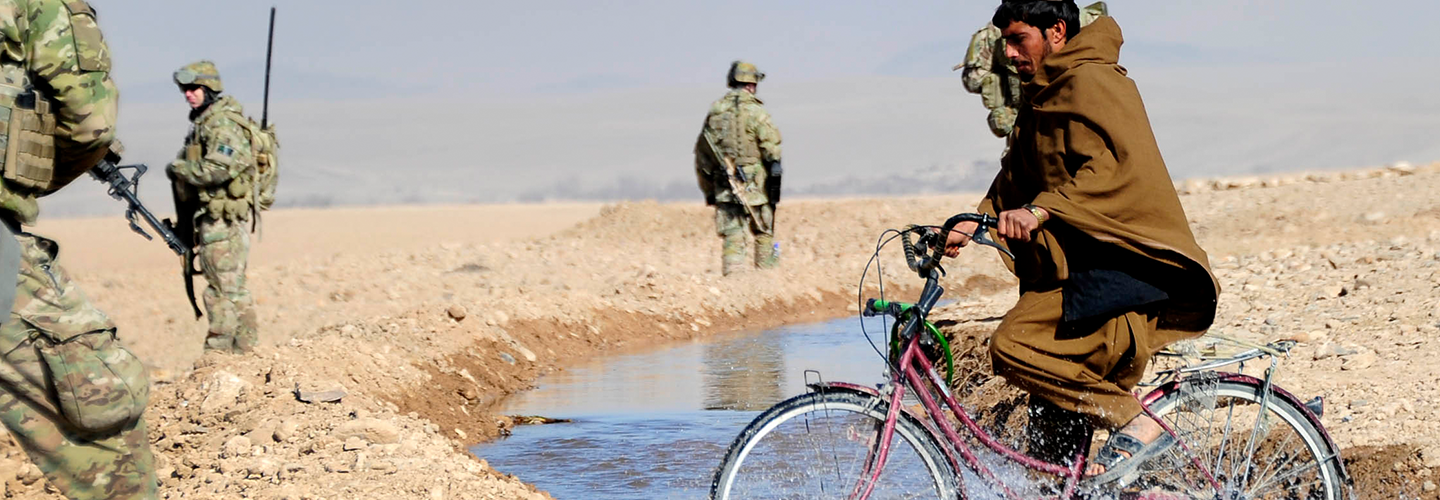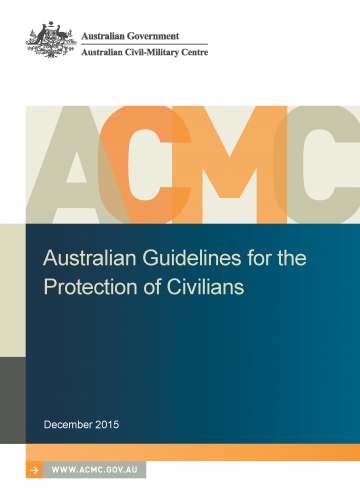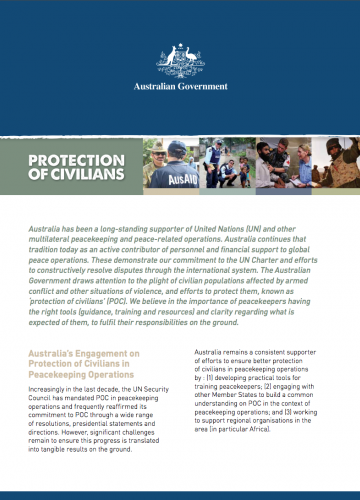Protection from violence
Contemporary armed conflicts and other situations of violence have a devastating impact on civilians. The concept of Protection of Civilians was developed by the United Nations, national governments and humanitarian actors to protect populations from the effects of violence in armed conflict and other situations of violence. Protection of Civilians includes all activities aimed at ensuring full respect for the rights of civilians in accordance with the law, including human rights law, international humanitarian law, international criminal law, and international refugee law, and encompasses the most immediate priority of providing physical protection to the more longer-term objectives of promoting the rule of law and security within a state.
Following the proliferation of conflicts in the 1990s, which saw civilians increasingly become the targets of deliberate attacks, gender and sexual based violence and crimes against humanity, the international community, led by the United Nations, developed an integrated concept for Protection of Civilians.
The UN introduced Protection of Civilians onto the UN Security Council (UNSC) agenda through its first thematic UNSC Resolution on Protection of Civilians in Armed Conflict (1265) in 1999. Since 1999, many additional Security Council Resolutions have been adopted to update and strengthen approaches to protecting civilians to evolving contexts. A recent and pertinent example is the May 2024 UNSC Resolution that focused on the respect and protection of humanitarian personnel UNSCR 2730 (2024)
The UN Office of Coordination Humanitarian Affairs (UN OCHA) leads on the development of the annual UN Secretary-General’s Reports on Protection of Civilians in Armed Conflict, which are available here. UN OCHA also hosts a ‘UN POC Week’ to coincide with the UNSC’s annual Open Debate every May.
(Protection of Civilians Week 2024 | OCHA (unocha.org))
Australia’s approach to POC is articulated in the Australian Guidelines for the Protection of Civilians, which was endorsed by the Chief of the Australian Defence Force and the Australian Federal Police Commissioner in 2015. The development of these guidelines was facilitated by the Australian Civil-Military Centre, and are a significant milestone in demonstrating the Australian Government’s commitment to a coordinated approach to POC.
The Protection of Civilians Guidelines articulate an Australian whole-of-government perspective on protecting civilians across international operations and engagements in which Australia is involved. They outline agreed principles and focus areas identified by Australian government agencies for protecting civilians, and provide strategic guidance and key considerations to inform the development of Australian government policy and strategy.
The Protection of Civilians Guidelines state that Australia’s international operations and engagements will be guided by the following principles:
- Protection of Civilians is integral to Australia’s contribution to international peace and security;
- Protection of Civilians strategies reflect Australia’s international legal obligations including, where applicable, international humanitarian law, international human rights law, international criminal law and international refugee law;
- Protection of Civilians strategies will support the host state’s protection efforts or inform actions to protect civilians when the host state is deemed unable or unwilling to protect its own civilians, or when government forces themselves pose a threat to civilians;
- Protection of Civilians strategies will include planning and consultation with civil society organisations and local community members with a view to creating a sustainable impact;
- Protection of Civilians strategies will recognise and address the different needs of vulnerable groups including women and girls, men and boys, the frail and wounded, people with disabilities and ethnic minorities, refugees and internally displaced persons, and professionals at risk such as medical personnel; and
- Australian agencies will act in coordination with all protection actors including military, police and civilian components.





